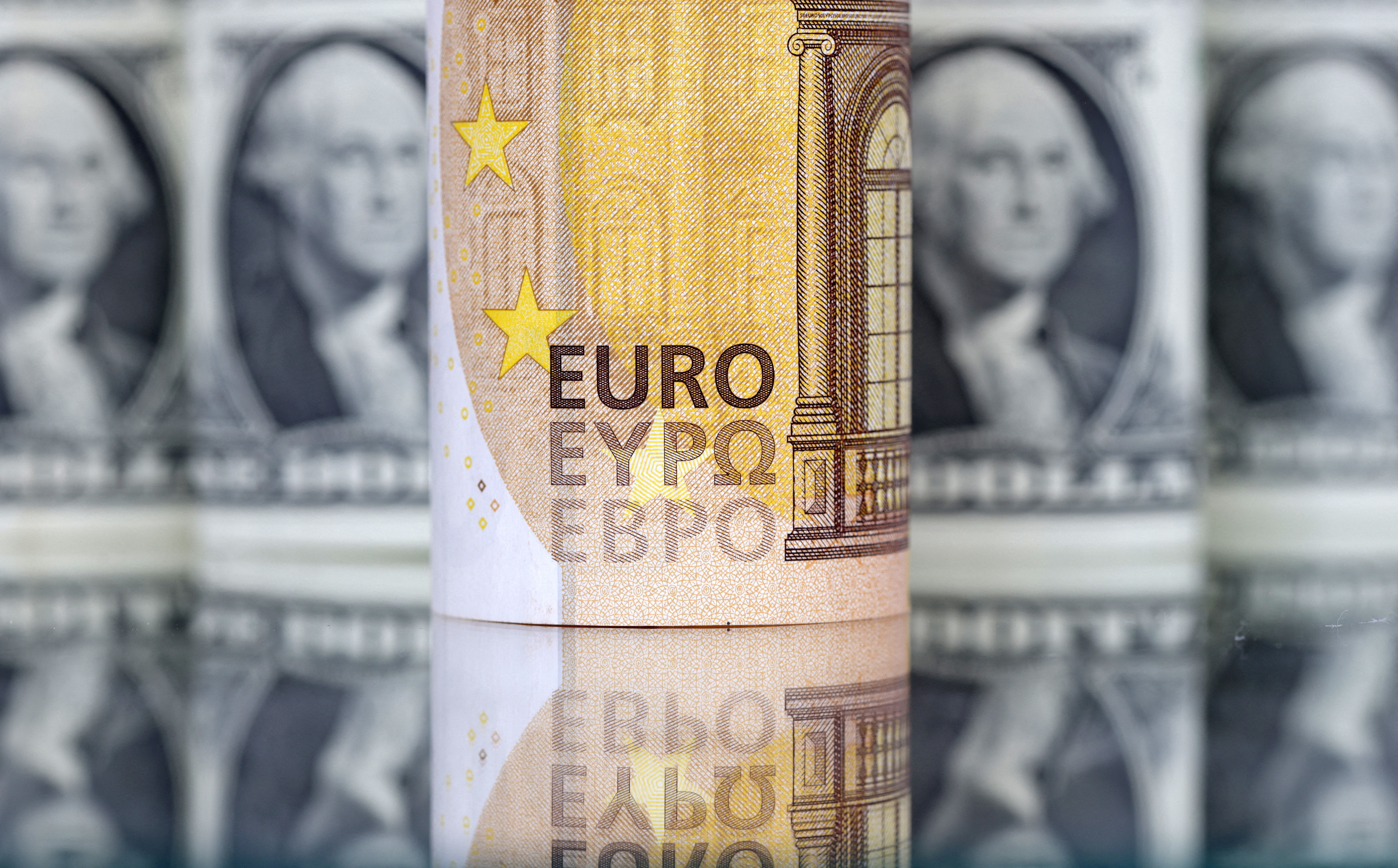
LONDON, Aug 24 (Reuters) – Re-energised after a summer lull, the U.S. dollar has been supercharged by the stark contrast in energy price shocks faced either side of the Atlantic – one that’s pummelled the pound and euro again this week.
Despite ‘long dollars’ being cited as the most crowded trade on the planet and amid expensive long-term valuations and ebbing relative real yields, the dollar is on the march yet again to its highest in almost 20 years against the euro and post-pandemic peaks versus sterling.
With everyone seemingly in thrall to a narrative of ‘peak inflation’ stateside, where a drop of more than 20% in gasoline pump prices since June to under $4 per gallon appears to have lifted the economy there again, you’d barely notice in Europe.
The relationship between crude and retail petrol prices is less lockstep in Europe of course. But the relentless and blinding squeeze in natural gas prices due to the West’s stand-off with Russia over Ukraine may hurt households and businesses far more into the coming winter – sapping budgets, quickening inflation, lifting interest rates and hastening recession.
With market prices for natural gas already more than six times what they were a year ago – perhaps in part due to frantic early storage to avoid winter rationing – currency markets are again rethinking the relative growth and inflation hit.
Economists now expect euro zone inflation to hit double digits by year-end. Britain is already there, recording annual price rises above 10% last month and Citi economists now suspect rising energy price caps and home heating bills could see it hit 18% next year – five points above the Bank of England call. read more
Steven Bell, director of multi-strategy investments at Columbia Threadneedle, describes the “extraordinary divergence” in energy prices between Europe and the United States, “almost inevitable recession” in Europe this winter, and an “impending disaster” in Britain.
Bell points out that natural gas prices in Europe and the UK are now a whopping eight times those on the other side of the Atlantic. And while some government support is likely, average UK household energy bills are set to rise by an unprecedented 3,000 pounds in less than 12 months.
Added to the growth hit, markets also suspect the recessionary impact of that shock may see European central banks hold back more on interest rate rises than the recently emboldened Federal Reserve hawks.
Faced with such a macro mismatch and potentially stark U.S. outperformance over the winter, currency markets raced to adjust.
“The mighty dollar could get even mightier,” said Bell.
And yet there’s still a gnawing sense that the dollar should already have much of this on board.
UNCOMFORTABLE
Francesca Fornasari, head of currency solutions at Insight Investment, said FX markets were clearly now “laser focused” on the transatlantic energy price differential.
But she reckoned the dollar still looked very expensive and may find gains much harder from here.
While the contrasting energy shock seemed impossible to see beyond, relative shifts in that story were not inconceivable, business surveys from August showed no sizeable European underperformance yet, and investors are already very underweight European assets in preparation.
Bank of America’s monthly fund manager survey, for example, shows a net 34% of global funds underweight European stocks – a reading that’s two standard deviations below long-term averages and in sharp relief to the net overweight in U.S. equities.
That thins the oxygen levels for the lofty greenback.
“Valuations are extremely stretched for the dollar,” said Fornasari. “It’s about 20% overvalued on fair value models – some of the most extreme levels of the past 30 years.”
“To be long a currency that’s 20% overvalued is an uncomfortable position for any investor.”
“Overweight positioning in dollars is not going to stop it going higher but it will make gains from here more difficult.”
What could change the story?
Government supports may offset worse-case scenarios in Europe or natural gas prices could quickly subside once storage levels hit max or global recession fears rapidly crimp demand for energy. That said, the dollar tends to benefit in times of global recession anyway as scared overseas U.S. investment returns to home markets or just dollar cash – now more attractive nominally than its been for years.
The flipside could be another worsening of U.S. domestic activity, an over-eager Fed or even anxiety about the U.S. midterm elections.
For all the new ground broken against the euro and sterling this week, the dollar’s index still hasn’t topped the June peaks. It may need more energy to leap that hurdle.
The author is editor-at-large for finance and markets at Reuters News. Any views expressed here are his own
Share This:




 CDN NEWS |
CDN NEWS |  US NEWS
US NEWS 




























Trump Is Scaring Republicans Away From Saving the Planet